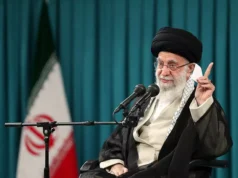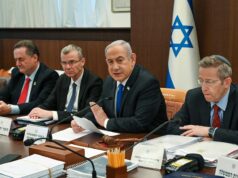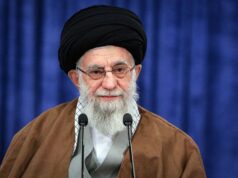Fear of Terrorism Versus the Loss of Freedom
Exploding expenditures. Indefinite expansion of the Department of Defense. An unprecedented fear of an enemy that could strike anywhere, anytime without warning. These are no longer the results of two embattled superpowers waging a Cold War. This is the rise of the new American security state. This is modern America.
The National Security Agency (NSA) stands at the forefront of the blossoming surveillance programs brought about by the failures of U.S. intelligence operations before the 9/11 terrorist attacks. With a budget that has doubled since 2001 to an estimated $25 billion annually, the largest U.S. intelligence organization now processes 1.7 billion pieces of intercepted communications every day. Ten billion dollars per year is spent on keeping secrets secret. Such intelligence operations have extended far beyond the targeted analysis of al-Qaeda to include every American citizen, a policy that has marked a significant divide in public opinion over how to balance the constitutional guarantees of civil liberties with the uncertain prospects of future acts of terrorism. Washington Post investigative journalist Dana Priest and military expert and author William M. Arkin compiled a detailed breakdown of the scope of ongoing federal efforts to combat these threats with Top Secret America: The Rise of the New American Security State.
Just slightly ahead of the storm, Priest and Arkin provide the essential skeleton for understanding today’s almost-daily revelations of governmental intrusion. PRISM, XKeyscore, Tempora, and telephone metadata collection intelligence programs by NSA leaker Edward Snowden are the result of an extraordinary and convoluted system.
The Aftermath of 9/11
John Rizzo, a key U.S. official involved in covert and clandestine missions launched against al-Qaeda went on the record saying, “‘the cumulative number’ of covert operations during the Cold War ‘pales in comparison to the number of programs, number of activities the CIA was asked to carry out in the aftermath of 9/11 in the counterterrorism area.'” Such an extraordinary divergence from previous U.S. domestic and foreign policy precedents necessarily deserves a thorough discussion of not only its intent, but also its implications. Confronting such a topic head-on is a daunting task and Top Secret America is the product of years of extensive research in the authors’ quest to promote a public dialogue due to their assertion that “the government has still not engaged the American people in an honest conversation about terrorism and the appropriate U.S. response to it.”
True to journalistic ethics, the reporting remains considerably objective and is backed by an overwhelming amount of sheer data, figures, and first-hand accounts. There is no room for partisanship here, as the roles of both the Bush and Obama administrations in creating and expanding the national security machine are highlighted without skewing blame or responsibility toward one in particular. Furthermore, it is important to note that the authors do not personally and overtly attack the surveillance state, instead reserving their private opinions from the book’s 11 chapters. That said, the work itself is a cautionary analysis—not because of biased or exaggerated assertions, rather because the information presented is intended to reveal facts the government would rather not discuss. Indeed, Priest recounts the CIA’s vehement efforts to persuade her to desist in her line of questioning; she persisted.
Credit is given where it is due, and the authors attribute the diminishment of al-Qaeda operatives worldwide to the sweeping intelligence efforts. However, given the U.S. government has, for the most part, accomplished the mission for which such programs were constructed, “The dragnet approach no longer makes much sense” to the authors. Leaving America completely in the dark as to its secret fourth branch of government produces more harm than security, they believe. These barriers do not simply separate knowledge of operations between the agencies and the American public; they establish distrust and hyper-compartmentalization among the agencies themselves, a case in point being the inability to disclose information to each other to verify the presence of weapons of mass destruction in the lead-up to the Iraq War. Additionally, it is noted that as the threat Osama bin Laden posed to the United States grew, the number of officials aware of the terrorist leader’s activities continued to shrink. Such a counterintuitive tactic blocked coordination between the various chapters of government to quell al-Qaeda’s plots. Priest and Arkin’s encouragement to reevaluate this degree of secrecy forms the foundation of the book.
A Vast Spying Apparatus
The subsequent 300-plus pages explore the vast spying apparatus through Arkin’s decryption of hidden governmental workings and Priest’s investigative interviews with numerous high profile and often-anonymous governmental and private sector contacts working closely with the programs themselves. There is something decidedly ironic about the most expansive spying program in history being revealed so thoroughly by two individuals; the fact alone brings the question to mind: how does the government intend to prevent significantly more sophisticated attempts by the enemy to uncover the classified information about not only its programs, but its citizens? The authors make a critical point: “The security of secrets ultimately depends upon human beings.” Whether for selfish reasons “or to explain away something that sounds evil, or to save the agency from itself, or to stop wrongdoing,” insiders talk. To whom is crucial, and more secrets entail more opportunities for the system to break down under its own weight.
Reform of intelligence and surveillance was voiced as a tenet of the 2008 presidential campaign, though reform never came. Although having been elected on the promise of a radical departure from the security policies of his predecessor President George W. Bush, Barack Obama’s “idealism quickly faded once he took office.” The man who had condemned in 2007 the “false choice between the liberties we cherish and the security we provide” put forward by the outgoing administration, embraced a similar approach. His inheritance of the surveillance machine was more than he and his administration had bargained for, finding it nearly impossible to rein in the ever-expanding apparatus.
Contractor-Military Relations
At the heart of the situation lies the private contractor-military relationship, entities so interlocked the programs have become, to a large extent, profit-driven initiatives with personnel from each cycling from one to the other. A former Secretary of Defense admitted with frustration, “The Department of Defense is no longer a war fighting organization, it’s a business enterprise.” Of the 854,000 individuals with top-secret clearances, 256,000 are private, a testament to the fusion of two sectors collectively referred to as the terrorism-industrial complex.
Furthermore, the very top CIA officials who were unable to prevent 9/11 have become the heads of many of these defense corporations. This pervasive element is but a single component of a system so bloated with divisions, a contact in charge of the Controlled Access Program Coordination Office (CAPCO) resorted to the analogy of 212 dressers (top-level programs), each with their own drawers (compartments), further containing their own sock drawers (subcompartments), rendering a structure “so dense that even the people who supervise the system don’t understand the terminology or use it correctly.”
The redirection of surveillance efforts to encompass the entirety of the American public accounts for much of the increased complexity of the system. The military’s battlefield is turning inward, for in the words of Sen. Lindsey Graham (R-SC), “The homeland is the battlefield.” Priest’s efforts to uncover the hidden realities of this mindset led her to the basement of a Northern Command outpost in Colorado, the first modern establishment of its kind to target America as opposed to a foreign a territory. The structure itself is a product of the “alternative geography” spreading across the country that has seen a multitude of deliberately camouflaged intelligence facilities shrouded among numerous unassuming American communities and businesses. Housed inside this particular one is the Homeland Security Infrastructure Program, a revolutionary national mapping effort begun in 2005 to create a “common operating picture” of the entire country via a mind-bending digital network of wired surveillance. “One Nation, One Map” is a fitting motto for the ambitious project.
Secretary of Homeland Security Janet Napolitano’s efforts to combat the alleged rising threat of homegrown terrorists facilitated much of this transformation of America into the battlefield. The authors draw a connection between her statements on the need for preemptive civil defense and the Cold War McCarthyist mentality. Her “See Something, Say Something” campaign is one such tangible implementation of this ideology. Local authorities and police are becoming an increasingly reliable arm of the government in enforcing its counterterrorism policies, as well, causing the line between the federal and state levels to become more and more blurred.
Drone warfare, too, has been brought into the mainstream consciousness, particularly with the filibuster by Sen. Rand Paul (R-KY) on its application to citizens on American soil this past March. In attempting to explore the legality of weaponized drone usage, the authors ran into conflicting reports and standards, once again due to a lack of cooperation and trust between the Central Intelligence Agency (CIA) and the military’s Joint Special Operations Command (JSOC), both of which hold jurisdiction over the program. The latter was tasked with addressing the influx of al-Qaeda into Iraq post-U.S. invasion under the Bush administration and, coupled with the drone operations, al-Qaeda membership has dwindled significantly. Nevertheless, the lack of cohesive oversight led then-Ambassador to Pakistan, Anne Patterson, to warn that “stronger actions against the U.S.” may be taken in the near future if greater discretion and regulations are not employed.
A Secret Army
A secret army operating as a subcomponent of JSOC since 1980 dominates control over the program, flying ten times as many drones and killing ten times as many al-Qaeda as the CIA. Known by many names used to conceal its true identity, this army is summarized by a U.S. Navy SEAL who said, “We’re the dark matter. We’re the force that orders the universe but can’t be seen.” Equipped with an internal kill list, this entity was responsible for the assassination of bin Laden on May 2, 2011. Operating outside the existing legal framework, it is “the president’s personal weapon” and is capable of bypassing oversight and the checks of the other branches. More importantly, it represents a major facet of the surveillance state it serves.
This state of America, brought about by the Global War on Terrorism, has left the nation at a crossroads. Its direction moving forward depends upon its answer to the question: does it fear the threat of terrorism or the loss of freedom of more? An even more complex notion to consider is whether the orchestrator of 9/11 is accomplishing his goal of fragmenting the world’s greatest power post-mortem. It is, indeed, a debate that will rage for years to come. Priest and Arkin’s goal was to initiate that very discussion, and Top Secret America succeeds in this regard. “Secrets aren’t just hard to keep,” the authors write, “they can also become toxic to the system they try to protect.” It is left to America to determine whether such a system has merged intent with impact.
Skyler Schmanski interned as a research assistant at The Jewish Policy Center in 2013.





